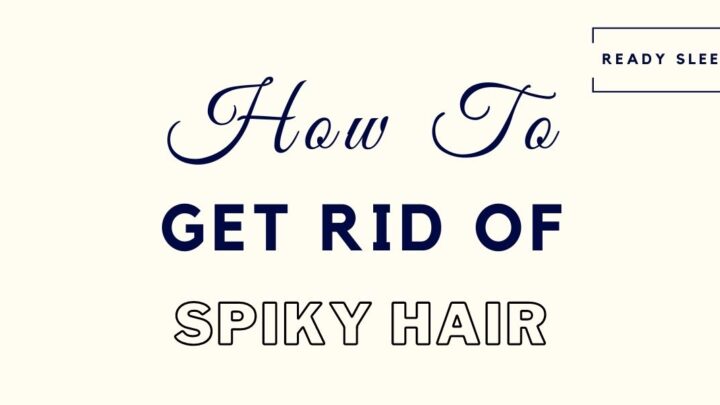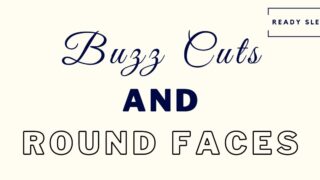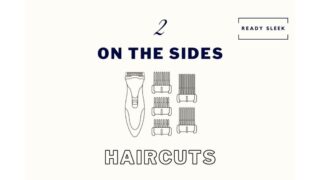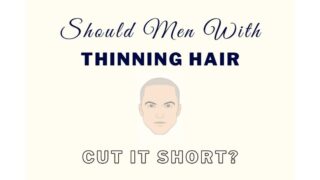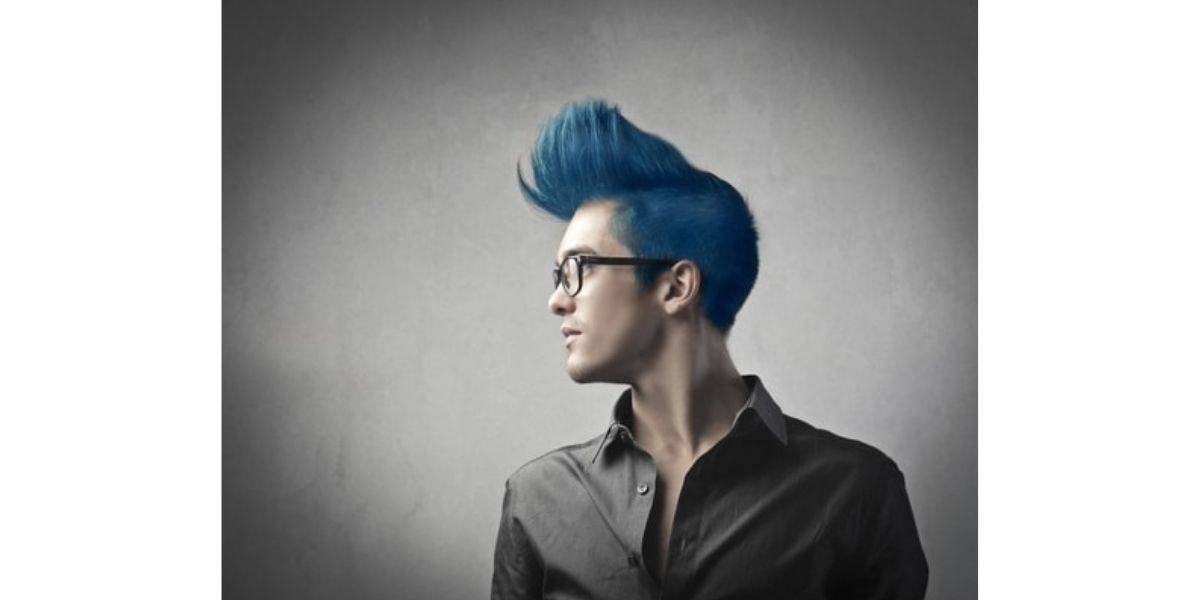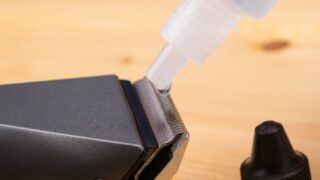Hair that doesn’t play ball can wreak havoc on a man’s grooming routine. But it’s no secret that the cause is usually poor technique and a lack of knowledge. You’re about to learn how to get rid of and flatten spiky hair in the most effective ways possible.
Before I give you specific ways to tackle this age-old problem, let’s briefly go through why it happens in the first place.
Why Does Hair Get Spiky?
The main reasons for hair spiking up include it being too short, unwashed, poorly styled, very thick, or simply cut the wrong way.
As you’d expect, the main ways of flattening spiky hair focus on fixing this stuff.
Knowing why it’s happening should help you see the logic behind the fixes.
9 Ways To Get Rid Of And Flatten Spiky Hair
Experiment with these solutions and find the ones that work best for you.
It’s important to bear in mind that there are many different hair types out there ranging from thin to thick, and from long to short.
I’ve tried to keep these fixes as neutral as possible and so they should apply to any hair type.
1. Grow It Longer
Adding some length tends to fix a bunch of hair problems. Spiky hair is one of them.
Hair that’s short tends to spike up. You’ve probably noticed this soon after a haircut.
No matter how hard you try or how much product you apply, that hair just sticks straight up like grass.
Short hair just doesn’t have enough weight or length to lay down flat. It’ll spring back up no matter how hard you try.
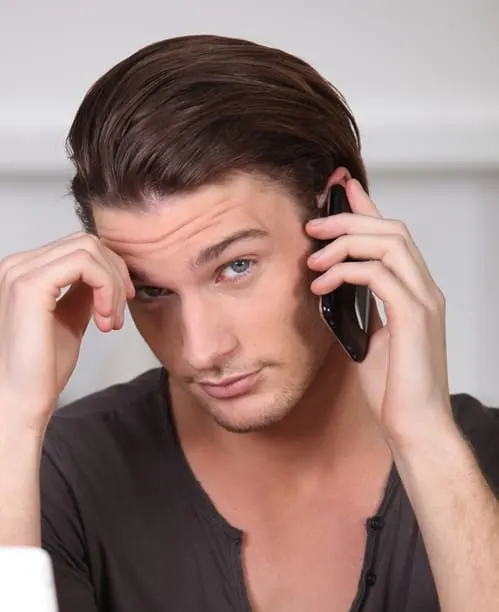
Eventually, you’ll get enough length for the hair to weigh itself down, even without the assistance of a hair product.
You’ll find that the hair that used to spike up simply lays flat without you even trying to flatten it. That’s the beauty of having length to work with.
Whether you’re looking to pull the hair forward or slick/comb it to the side, having enough length will allow you to do it without the risk of hair sticking up.
You often don’t need as much length as you might initially think. Sometimes a single additional inch can do the trick – everything just looks more tame and flattened.
Once you’ve got around 5 or 6 inches of hair, you’ll probably even have enough length to slick it back. This won’t be everyone’s favorite option – but at least you’ve got the option.
Slicking it all back is yet another way of preventing hair from spiking up – but you need enough length to pull it off.
2. Get The Right Haircut
Some haircuts will lead to spiky hair no matter how much time you put into getting rid of it.
It’s a shame because people don’t even realize this at first.
But getting the right haircut will lay the groundwork and make it more likely that your other efforts will work.
Layered haircuts where the strands of hair vary in length a lot are more likely to stick up. Some men prefer this because it makes it easy to build texture with.
But when you’re looking to prevent spiking you would be better off with a more uniform haircut where there isn’t as much variety in length.
You won’t have as much strand separation – overall, the hair would have a more uniform appearance with the hairs lying neatly next to each other side by side.
Let your barber know that you’re sick of the spikiness – they should be able to give a haircut that minimizes it.
3. Use Conditioner
It’s true that simply washing with water and shampoo alone will make the hair a lot more responsive and easier to style.
Washed hair cooperates a lot more than unwashed hair.
But this is obvious and most men do this.
What most men don’t do is add the second step of a conditioner to their hair washing regimen.
Conditioner has many benefits – the main ones being smoothing, detangling, moisturizing, and reducing frizz. It makes the hair softer, more flexible, and easier to comb through.
All of this makes the hair easier to style and more likely to do what you want it to.
More specifically, it should make it more likely that you’re able to tame that spiky hair if you combine it with some of the tips and tricks in this post.
You’ll most likely find that using these tips in combination will be a lot more effective than using one of them.
For example, using a conditioner, towel-drying, and then applying a pre-styler will be more effective than simply doing one or the other.
That brings me nicely onto the next tip.
4. Use A Smoothing Pre-Styler
A pre-styler is something that’s applied before you style.
There are several different types of pre-styler, each of them with different functions. Reducing frizz, smoothing, thickening, etc.
When you’re looking to get rid of spiky hair, a smoothing pre-styler would be the most appropriate one to use.
Smoothing lotions such as Moroccan Oil Smoothing Lotion (Amazon Link) can work well. They often include substances such as argan oil and Vitamin E.

They make the hair feel smoother, easier to comb through, and style. It’ll be more likely to lay flat when you want it to.
Smoothing pre-stylers are often applied to the hair before blow-drying. This should amplify the effects of the blow dryer but also produce a smooth, full, and tidy finish instead of a spiky or frizzy one.
Although you could leave the pre-styler to air dry, blow-drying is usually more effective and leads to a more striking and obvious result.
5. Blow Dry It Into Place
Using a blow dryer isn’t just useful for activating the smoothing pre-styler you may have just used.
It’s also helpful for flattening out the spiky hair using direct, targeted pressure and heat.
Concentrator nozzles are narrow attachments you put onto the end of a blow dryer. They focus the pressure and heat, literally concentrating it in specific areas.
This gives you way more control and allows you to target small areas with it, instead of simply blow drying everything at once.
It’s a lot more precise.
There will most likely be patches of hair that refuse to stay down, with hair sticking and spiking up no matter what you do.
Pointing the blow dryer at it with a concentrator nozzle firmly attached is a great way to provide some negative pressure and flatten out those troublesome strays.
Avoid high heat settings – stick to medium heat and medium-to-high speed settings. Hold the blow dryer at least 8 inches away.
Blow-drying after washing and applying a smoothing pre-styler is a great way to lay down the flyaways and keep them down.
6. Comb In The Direction Of Growth
If you want to flatten spiky hair, get to grips with the direction in which it grows.
A common reason for hair sticking up in certain areas is simply trying to comb it against the direction it grows.
Cowlicks are a great example of this in action – but they’re so annoying that I’ve dedicated the whole of the next tip to them.
But even outside of cowlicks, there’s a good chance that spiky hair is simply hair that’s been combed, brushed, or styled in a direction that isn’t its natural direction of growth.
You could think of the hairs as simply rebelling against a position they don’t want to lie in naturally.
Sometimes there’s not a huge amount you can do about this. For example, the hair on top grows forward for the most part.
It’s unlikely you want to comb all of the hair on top forward into a fringe unless you’ve got a French Crop going.
But if you’ve got a few hairs spiking up or out, try combing those specific hairs in a different direction. There’s a good chance it’ll flatten itself out.
A common problem is the hair on the sides spiking.
This is because people try to comb or style the hair on both sides in the same direction, assuming that it grows in the same direction on the left and the right.
But it’s quite common for a lot of the hair on the left to grow in one direction (eg. downward) and the hair on the right to grow in another (eg. backward).
So, trying to style both sides downward, for instance, may lead to the hair on the right sticking out because it’s against the direction of growth.
Try to figure out the direction in which the stubborn stray hairs grow and comb them in the same direction to get rid of them.
7. Correct The Cowlicks
Cowlicks can be the bane of a man’s life. They’re a common reason for hair spiking up, so knowing how to deal with them is a great way to prevent it.
A cowlick is basically a patch of hair where the strands seem to grow in pretty random directions. Overall, it tends to form a spiral pattern.
You can get cowlicks anywhere, but the crown and the front are the most common.
Because the hairs grow in different directions, they often refuse to lay flat – sticking up even when you try to comb it.
This is because in order to lay hair flat you need to lay it in the direction it grows. When a patch of hair grows in many different directions, combing all of them in one direction will definitely lead to some hairs springing back up.
But it’s not that tough to deal with cowlicks by simply paying attention to the direction in which these hairs grow.
Feeling the hairs of the cowlick and getting a sense of what directions they grow in should allow you to be more precise with what direction to comb them in.
Combing the hairs around the cowlick in the specific directions they grow in should allow you to flatten the spiky cowlick hairs pretty effectively.
Another way of dealing with cowlicks is to simply comb over them. You’ll need enough length to do this, but when you’ve got it, it’s a pretty simple fix.
Finally, you may well find that these stubborn cowlick hairs just refuse to play ball. Don’t be afraid to apply a little extra hair product in this area to really flatten them out for the long haul.
But even if you do, it’s still important to pay attention to the directions in which the cowlick hairs grow and work with them instead of against them.
8. Use The Right Hair Products
This might sound obvious, but hair products will help you flatten out spiky hair.
A lot of men who struggle with this problem, however, are already using hair products. They still find stray hairs sticking out.
Of course, there’s always a good chance that this is simply due to the other problems explained in this post and not to do with the hair product.
But let’s say you follow the other tips and tricks in this post and you still find the occasional stray hair spiking up.
You may simply need to use a product with a heavier hold.
Hair products can broadly be grouped using two features – shine and hold.
Shiny products include pomades, waxes, and gels. Low-shine/matte products include creams, pastes, and clays.
You’ll definitely need to decide for yourself whether you prefer low shine or high shine. Take your hair thickness into account – avoid excessive shine if you’ve got fine or thin hair as you’ll probably show too much of the scalp.
However, when it comes to ridding yourself of hairs that stick out, the hold is more important.
The heavier the hold, the more likely those stubborn strays will stay down once you’ve styled them.
Any of the products I mentioned earlier could technically be “heavy hold” – it’s worth reading the description on the packaging (although this is often inaccurate).
Typical heavy hold products include hair clays, pomades (both water-based and oil-based), and hair gels.
Even if it’s just a small amount, applying these products to tricky hair that just isn’t cooperating may be enough to get the job done.
9. Use Accessories To Train It
This one is underrated.
Accessories such as hairbands, hairnets, caps, and durags can be used to train stubborn spiky hairs to lay flat.
Over time, you may find that they just respond better to your styling and flattening efforts and are more likely to stay the way you want them to.
Don’t get me wrong – you won’t be wearing these all the time. In fact, keeping your hair under traction for prolonged periods of time isn’t a good idea in any case.
But 10 to 15 minutes while lounging around in the house now and again will most likely make a difference.
If you wanted to and your hair was long enough, you could keep the hair in a slicked-back position with the accessory on. In fact, this is a great way of training the hair to slick back because it’ll probably be quite resistant to doing so at first.
It may not be an option or make sense for everyone’s styles, but it’s definitely one to think about for some.
Conclusion
There you have it.
Tips and techniques you can use to correct this endlessly frustrating problem effectively and efficiently.
Try them out and see what works for you.
Enjoy.
Ready Sleek founder. Obsessed with casual style and the minimalist approach to building a highly functional wardrobe. Also a fan of classic, vintage hairstyles.

